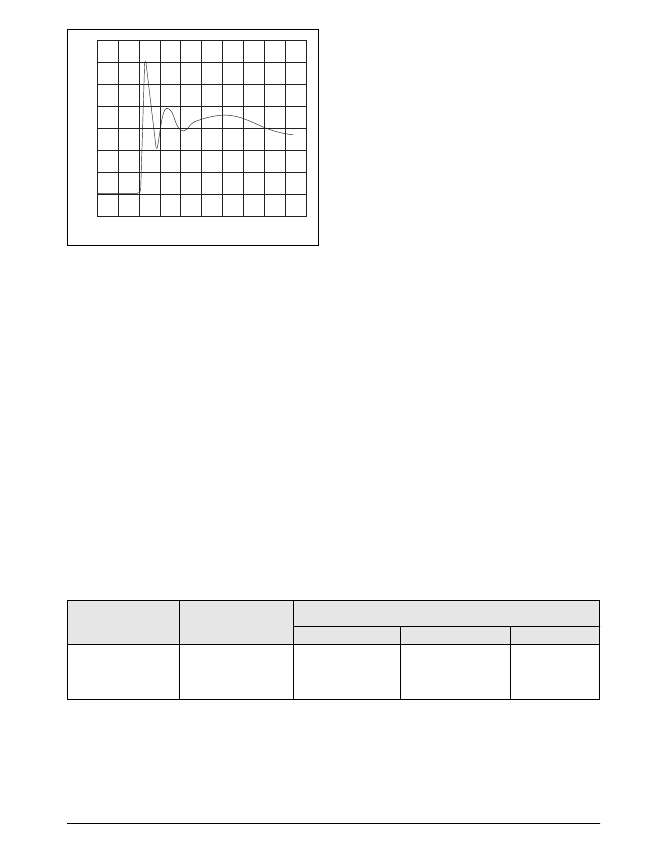- 您現(xiàn)在的位置:買賣IC網(wǎng) > PDF目錄372181 > SP385EET Low Power 5V RS232 Dual Driver/Receiver with 0.1?μF Capacitors; Package: SO; No of Pins: 16; Temperature Range: -40?°C to 85?°C PDF資料下載
參數(shù)資料
| 型號: | SP385EET |
| 元件分類: | 外設及接口 |
| 英文描述: | Low Power 5V RS232 Dual Driver/Receiver with 0.1?μF Capacitors; Package: SO; No of Pins: 16; Temperature Range: -40?°C to 85?°C |
| 中文描述: | 電可擦除可編程邏輯器件 |
| 文件頁數(shù): | 8/11頁 |
| 文件大小: | 137K |
| 代理商: | SP385EET |

Rev. 10/22/01 SP385E Enhanced +3V to +5V RS-232 Line Driver/Receiver Copyright 2001 Sipex Corporation
8
With the Air Discharge Method, an ESD voltage
is applied to the equipment under test (EUT)
through air. This simulates an electrically charged
person ready to connect a cable onto the rear of
the system only to find an unpleasant zap just
before the person touches the back panel. The
high energy potential on the person discharges
through an arcing path to the rear panel of the
system before he or she even touches the system.
This energy, whether discharged directly or
through air, is predominantly a function of the
discharge current rather than the discharge
voltage. Variables with an air discharge such as
approach speed of the object carrying the ESD
potential to the system and humidity will tend to
change the discharge current. For example, the
rise time of the discharge current varies with the
approach speed.
The Contact Discharge Method applies the ESD
current directly to the EUT. This method was
devised to reduce the unpredictability of the
ESD arc. The discharge current rise time is
constant since the energy is directly transferred
without the air-gap arc. In situations such as
hand held systems, the ESD charge can be directly
discharged to the equipment from a person already
holding the equipment. The current is transferred
on to the keypad or the serial port of the equipment
directly and then travels through the PCB and
finally to the IC.
The circuit models in
Figures 6
and
7
represent
the typical ESD testing circuit used for all three
methods. The C
S
is initially charged with the DC
power supply when the first switch (SW1) is on.
Now that the capacitor is charged, the second
switch (SW2) is on while SW1 switches off. The
voltage stored in the capacitor is then applied
through R
S
, the current limiting resistor, onto the
device under test (DUT). In ESD tests, the SW2
switch is pulsed so that the device under test
receives a duration of voltage.
For the Human Body Model, the current limiting
resistor (R
) and the source capacitor (C
) are
1.5k
an 100pF, respectively. For IEC-1000-4-
2, the current limiting resistor (R
) and the source
capacitor (C
S
) are 330
an 150pF, respectively.
The higher C
value and lower R
value in the
IEC1000-4-2 model are more stringent than the
Human Body Model. The larger storage capacitor
injects a higher voltage to the test point when
SW2 is switched on. The lower current limiting
resistor increases the current charge onto the test
point.
SP385E
Family
HUMAN BODY
MODEL Air Discharge Direct Contact Level
IEC1000-4-2
Driver Outputs
Receiver Inputs
±
15kV
±
15kV
±
15kV
±
15kV
±
8kV
±
8kV
4
4
Figure 8. ESD Test Waveform for IEC1000-4-2
t=0ns
t=30ns
0A
15A
30A
t
¥
i
¥
Table 1. Transceiver ESD Tolerance Levels
相關(guān)PDF資料 |
PDF描述 |
|---|---|
| SP385EEA | Low Power 5V RS232 Dual Driver/Receiver with 0.1?μF Capacitors; Package: SO; No of Pins: 16; Temperature Range: -40?°C to 85?°C |
| SP4010B | Analog Buffer/Voltage Follower |
| SP4010C | Analog Buffer/Voltage Follower |
| SP431CN | High Speed, +3.3V Quad RS-422 Differential Line Driver |
| SP431CP | High Speed, +3.3V Quad RS-422 Differential Line Driver |
相關(guān)代理商/技術(shù)參數(shù) |
參數(shù)描述 |
|---|---|
| SP385EET/TR | 制造商:SIPEX 制造商全稱:Sipex Corporation 功能描述:Enhanced +3V or +5V RS-232 Line Driver/Receiver |
| SP385EET-L | 功能描述:RS-232接口集成電路 3V to +5V RS-232 Line Driver/Receiver RoHS:否 制造商:Exar 數(shù)據(jù)速率:52 Mbps 工作電源電壓:5 V 電源電流:300 mA 工作溫度范圍:- 40 C to + 85 C 安裝風格:SMD/SMT 封裝 / 箱體:LQFP-100 封裝: |
| SP385EET-L/TR | 功能描述:RS-232接口集成電路 3V to +5V RS-232 Line Driver/Receiver RoHS:否 制造商:Exar 數(shù)據(jù)速率:52 Mbps 工作電源電壓:5 V 電源電流:300 mA 工作溫度范圍:- 40 C to + 85 C 安裝風格:SMD/SMT 封裝 / 箱體:LQFP-100 封裝: |
| SP386A | 制造商:Black Box Corporation 功能描述:1-Port USB-to-USB Isolator, 2 kV |
| SP386A-W1 | 制造商:Black Box Corporation 功能描述:1 YEAR WARRANTY FOR SP386A |
發(fā)布緊急采購,3分鐘左右您將得到回復。